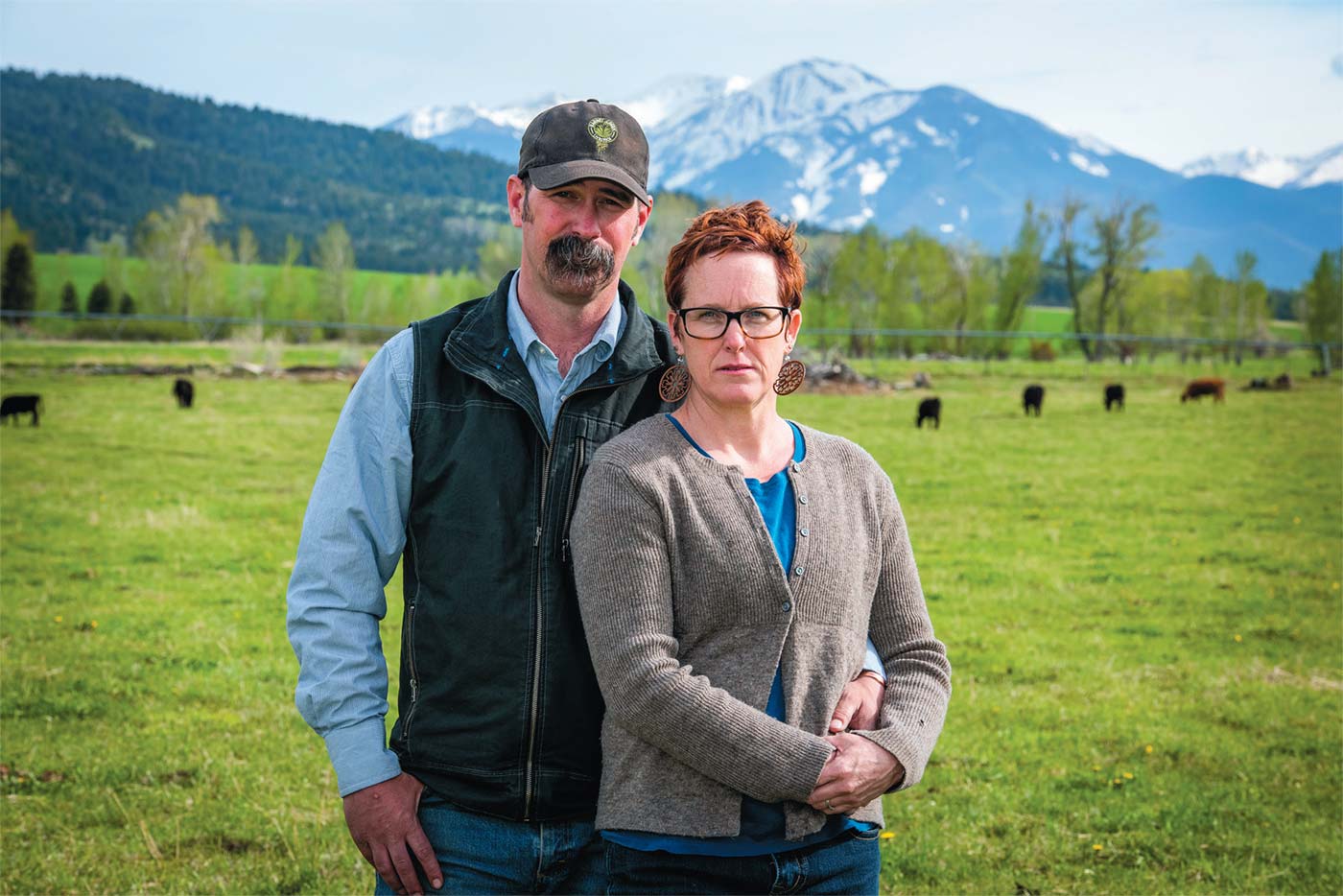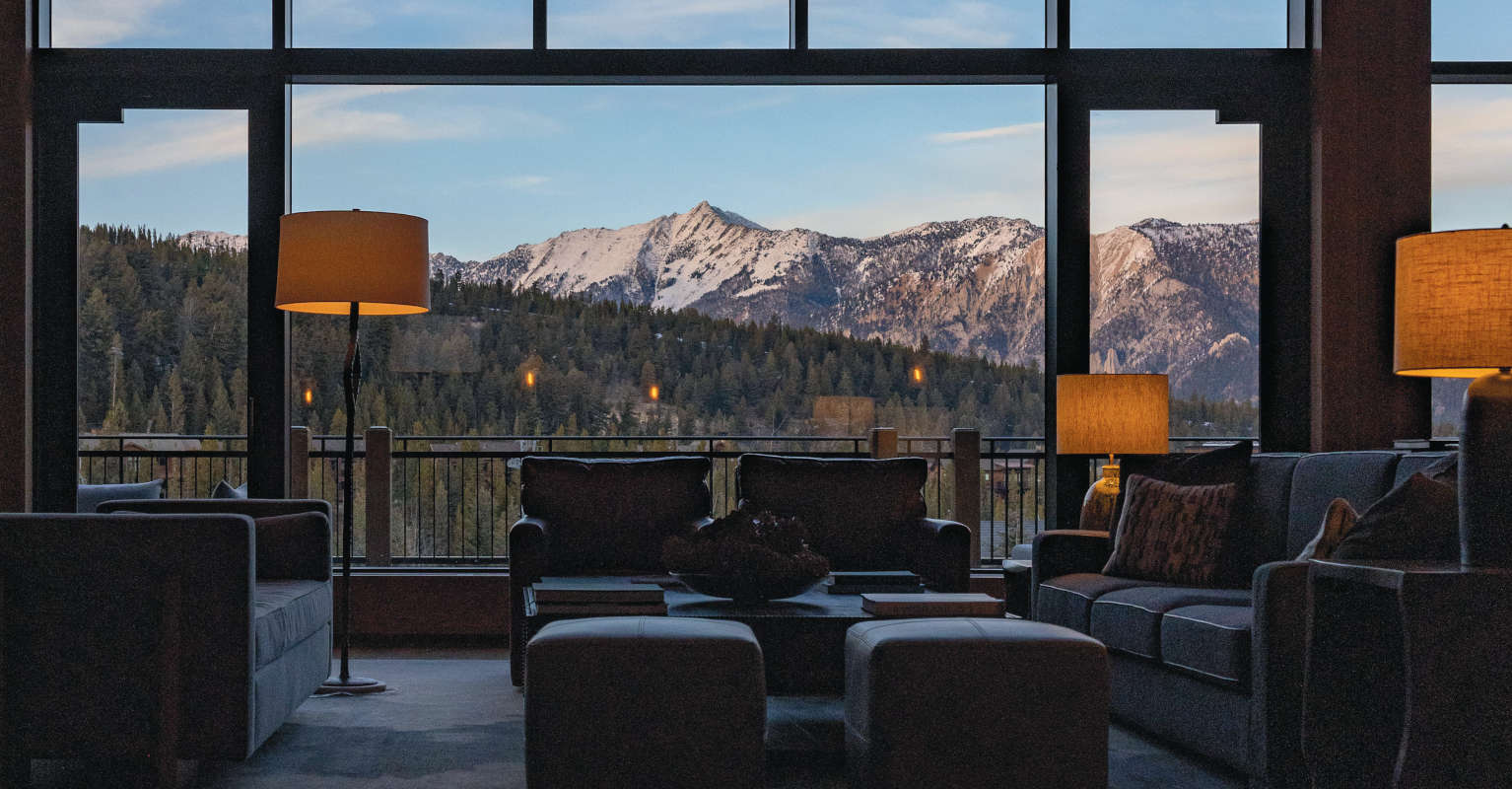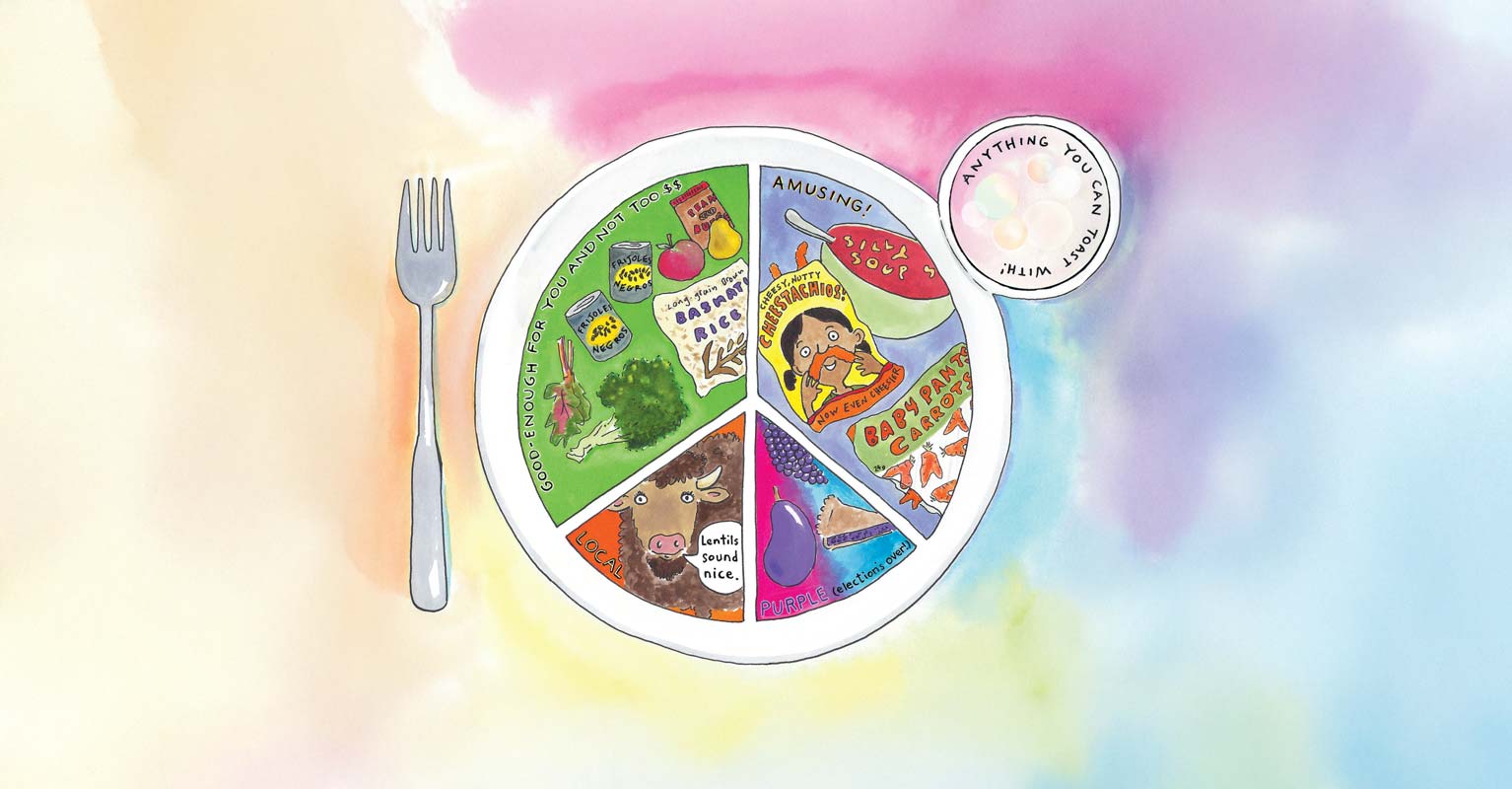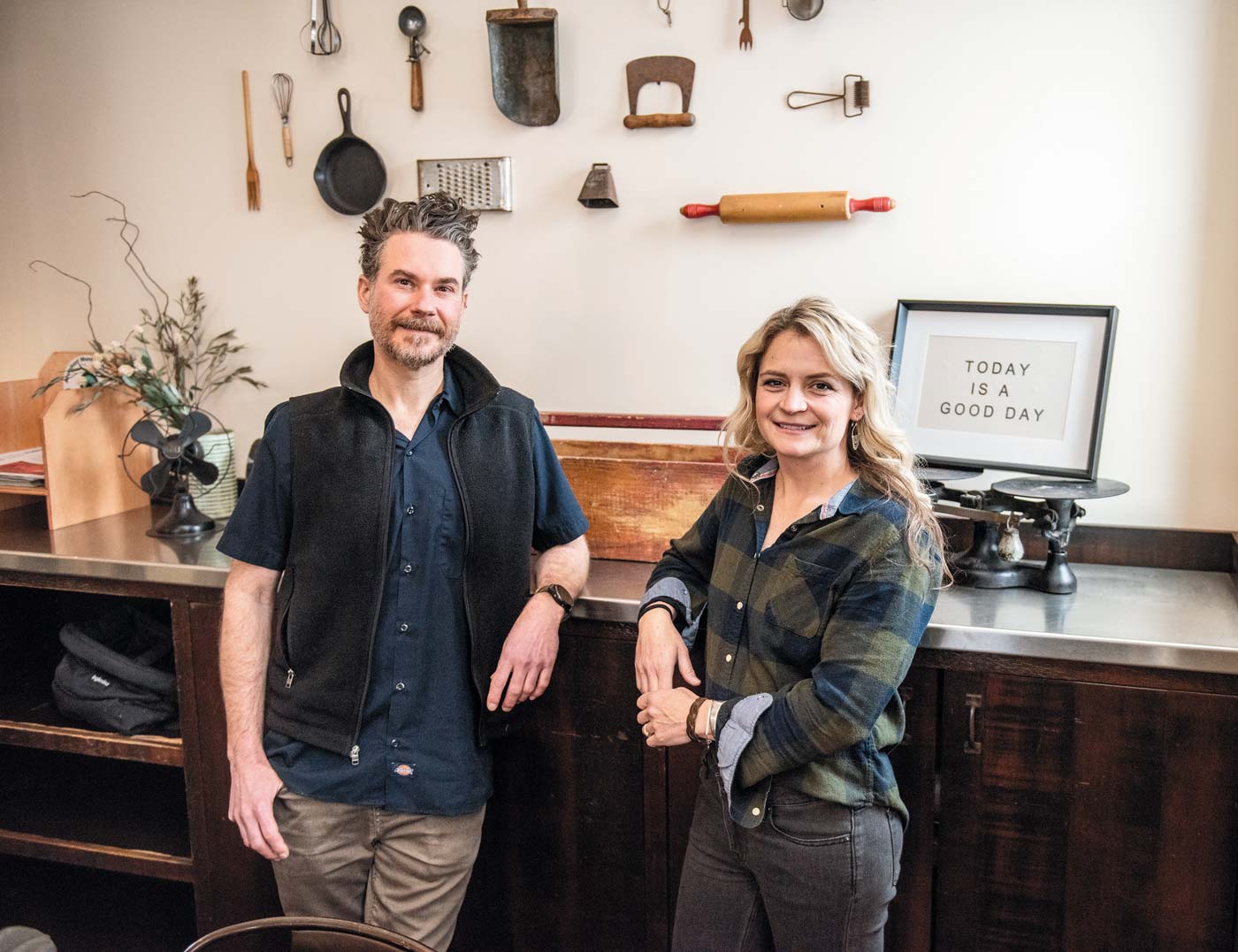Liam, Pete, Maloi, and Meagan Lannan on Jordan Ranch.
Caring for the Land through Regenerative Agriculture
Cultivators of the earth are the most valuable citizens. They are the most vigorous, the most independent, the most virtuous, and they are tied to their country, and wedded to its liberty and interests, by the most lasting bonds. —Thomas Jefferson
At the signing of the Declaration of Independence in 1776, 90 percent of Americans were farmers. Over the next hundred years, increased use of machinery meant fewer farmers were needed to manage larger plots of land. Then, in the 1970s, a federal push for food industrialization and efficiency shifted focus from responsible land use to maximum profits for food corporations and minimum costs to the consumer. By the year 2000, farmers made up a mere 2 percent of the working population.
Americans have seen short-term “benefits” like cheaper milk and more fast-food restaurants, but these conveniences have taken a toll on the land. It can take 500–1,000 years to create healthy topsoil, but we have managed to wipe out nearly half of the earth’s topsoil in the last 150 years. At this rate, according to the UN’s Food and Agriculture Organization, we will run out of the soil required to grow healthy crops in the next sixty years.
START HEALING THE PATIENT
We can fix this. We’ve done this kind of thing before. Fifty years ago we reversed damage to the ozone layer. Now it is time to turn our eyes to the ground. Within the last several decades, there has been a growing movement around the idea of regenerative agriculture. Instead of following dogmatic guidelines like USDA Certified Organic, regenerative agriculture adheres to agricultural principles and philosophies. According to the Rodale Institute, regenerative agriculture “improves the resources it uses, rather than destroying or depleting them.” Dwayne Beck, research manager at Dakota Lakes Research Farm, says regenerative agriculture is about returning to natural methods, as natural as we can with our human needs, and working with each piece of land individually. Each ranch, each farm, and each field needs to be cared for in a unique way. Examples include no-till farming, holistic animal grazing, crop rotation, and restoring broken water cycles.
No one claims a regenerative model is easy. Nicole Masters, agroecologist and director of Integrity Soils, an agricultural consulting firm, says regenerative agriculture is a “mindset shift”: “As Wayne Dyer once said, ‘When you change the way you look at things, the things you look at change.’ What was once seen as an obstacle becomes instead an opportunity.”
Such a shift can simplify an agricultural business by leading it to work closely with nature instead of fighting against it, which can make farmers and ranchers more resilient and more profitable in these changing times. In order to think about our agricultural system in five hundred or even one hundred years, the soil must be regenerated and rebuilt, which is just getting started with recent sustainable movements. However, “sustainable” is just that: sustaining, not necessarily improving. “The thing we’ve done so far,” says Beck, “is we’ve stopped the bleeding. But now we have to start healing the patient.”
Over the course of that first year they started to see changes in the landscape, starting with bugs. Meagan says Pete was out in the pastures one day when he ran in: “We have dung beetles!”
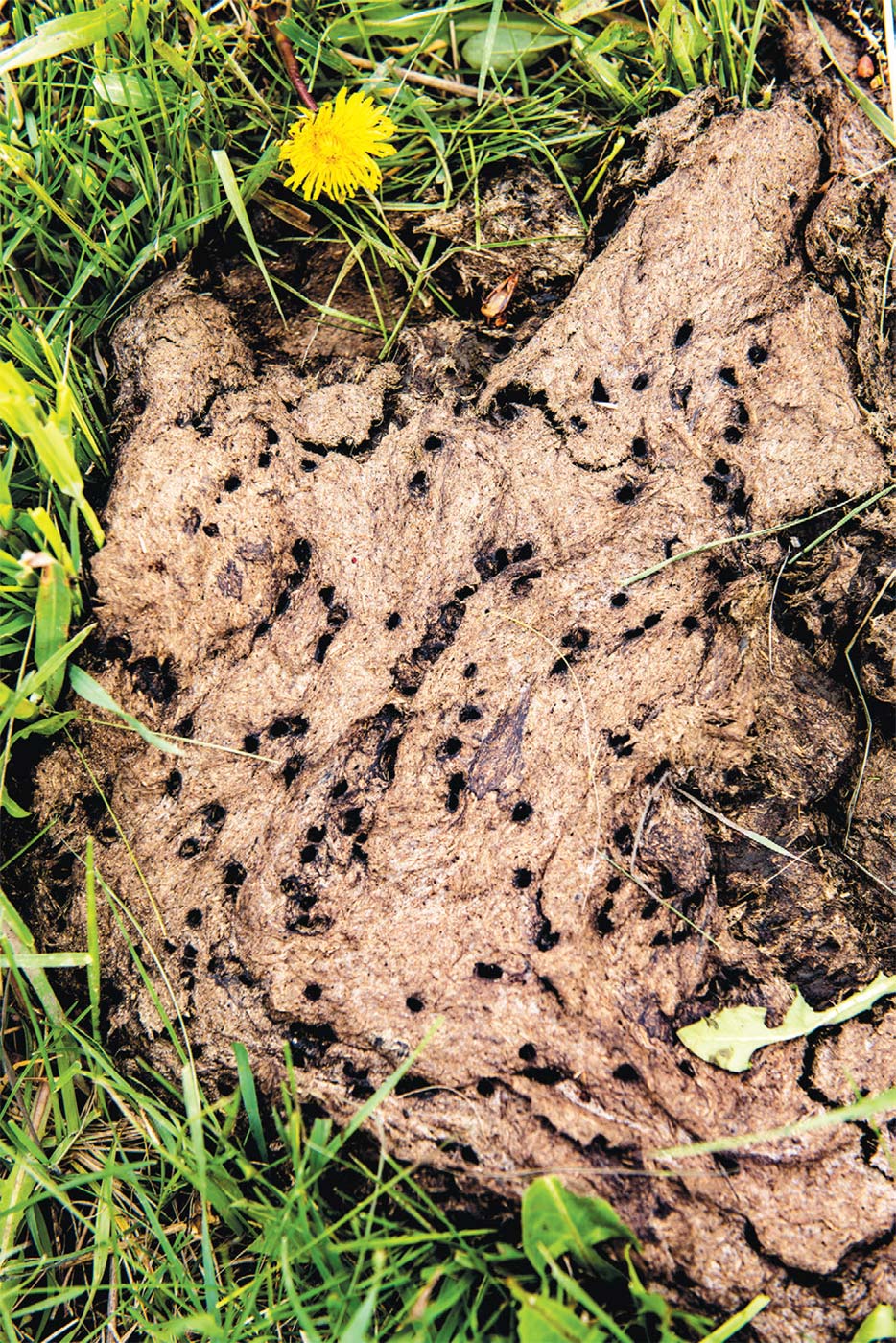
REGENERATIVE PRACTICES: BARNEY CREEK LIVESTOCK
Pulling into Jordan Ranch is like driving into a children’s book. The gravel road dips down to bright green pastures dotted with cows and their new calves, some only hours old. Horses munch on grass hay next to the red barn, a couple of goats prance along a hillside, ducks waddle along freely, and pigs trot out of their shelter as if to say hello. Meagan and Pete Lannan and their two kids, Liam, eleven, and Maloi, thirteen, run Barney Creek Livestock, a regenerative ranch outside of Livingston, Montana. Pete’s great-grandparents bought the ranch from Barney MaGuire’s estate in 1900 and it has been in his family ever since.
The land saw lots of livestock over the next hundred years, but Pete’s dad eventually sold off the cows as he got older and was unable to keep up with the labor, and he started to raise just hay. Pete helped manage the farm when he could, but he was (and still is) a full-time wildland firefighter and away most summers, which meant Meagan was left to wrangle kids and cattle. In 2011 Pete’s dad wanted to bring cows back to the ranch. They hoped it would be profitable but with the increased input and effort, Pete being away, and his parents too old to manage cattle, the family reached a crossroads. It is still difficult for Pete to reflect on the decision that had to be made: “My dad said, ‘I don’t want to have to do this anymore, so if you want the ranch you have to find a way to make it happen.’”
In 2016 Pete began researching different methods that could lower costs and overhead, like synthetic fertilizer, herbicides, tractors, and balers. He spoke with a nearby rancher and learned about regenerative agriculture. They learned more about their land’s soil, how to regenerate it, and how that in turn could cut down on the need to till the soil and cut the expense of treating cows for parasites, as well as the cost of purchasing hay. Pete and Meagan freely admit they weren’t looking to revamp the entire ranch into a regenerative model. “For us,” says Pete, “this was based out of necessity. When you’re backed into a corner you get pretty damn creative.”
Over the course of that first year they started to see changes in the landscape, starting with bugs. Meagan says Pete was out in the pastures one day when he ran in: “We have dung beetles!” They had never seen them before in their pastures. Dung beetles bury cow manure, which aerates the soil, creates organic matter, and helps water penetrate the soil. On our tour Pete shows me a few dung beetles in an empty pasture. As we pass through the pastures, Pete and Meagan show me more of their regenerative practices, such as growing warm- and cool-weather grasses by tossing grass seeds down in a field where the cows graze. The cattle then either trample the seeds into the earth, or eat the seeds (which are safe) and pass them in their manure. No more machinery, no more synthetic fertilizer.
Pete and Meagan (and their dog, Stitch the Rockstar) move their cattle to a new pasture every day, a method referred to as holistic planned grazing. The benefits of holistic planned grazing are multifold: It regenerates the land, increases animal performance, and is more profitable. The rotation is healthier for the land because it allows for resting the grass and soil, and the cows always have fresh grass, but how could a daily move be efficient?
“It takes one hour a day,” Pete tells me. Yes, they have fewer cows than large-scale ranchers, at about 100–120 head, but the system is not complicated. They set up electric fences that can be quickly shuffled, and a pivoted watering system crawls over the fences and moves with the cows. The cows are not stressed, and have come to know the family so well that they migrate without issue.
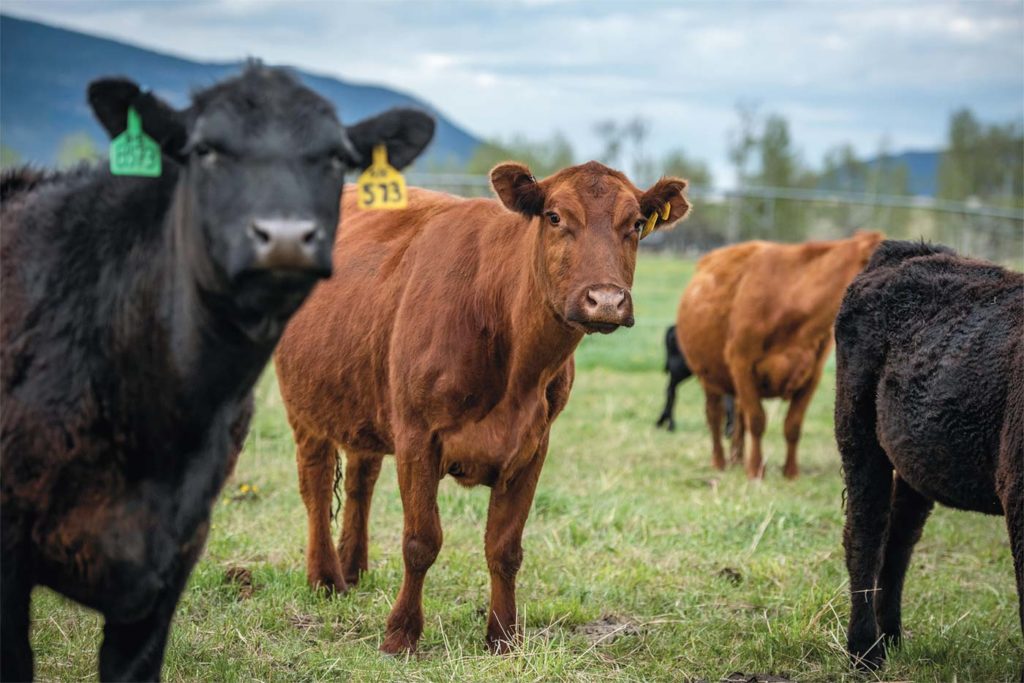
A GROWTH MINDSET
The methods of regenerative agriculture are unique to every plot of land, every region, every climate, and every industry. Both Pete and Meagan stress often that what works for them may not work for others. Masters, who worked with Pete and Meagan to establish a regenerative plan for the ranch, explains that there is no way to prescribe practices without knowing exactly what is in a field’s soil, without understanding the weather patterns, animal migrations, and more.
A new mindset around regenerative agriculture is about returning to a natural system for that particular piece of land. Beck explains, “If you have a truly natural system you don’t have a net export of nutrients, otherwise it would turn into a desert or a wasteland.” Regenerative agriculture is about putting more into the land than you’re taking out, which is done in many ways, depending on the location of the land. There are studies happening right now that show regenerative agriculture may even be able to pull carbon from the atmosphere and sequester it in the soil.
The best way to understand soil and plant science is to see it in action. Masters and Beck recommend everyone start a garden, however large or small. Plant seeds, watch them grow. Beck believes that gardening, like regenerative agriculture, does not need to be complicated. Maybe your garden does not need to be weeded so frequently; maybe you do not need to water every day. These are things that can be tested quickly in a home garden, even a potted one on a kitchen windowsill. Pete and Meagan are teaching regenerative agriculture to their kids as they run the ranch. Liam sells a compost tea made from worm castings. Maloi runs Red Clover Lambs, where she raises and sells lambs to Chico Hot Springs. Their family ducks provide eggs, and the kids raise pigs that will be shown at 4-H. Meagan and Pete admit to still learning about regenerative agriculture every day. They say they will always be learning, as they continue to test and iterate and shift with the weather and climate. Meagan sounds enthusiastic and hopeful as she tells me: “It’s been a process, but a fun, educational one.”
